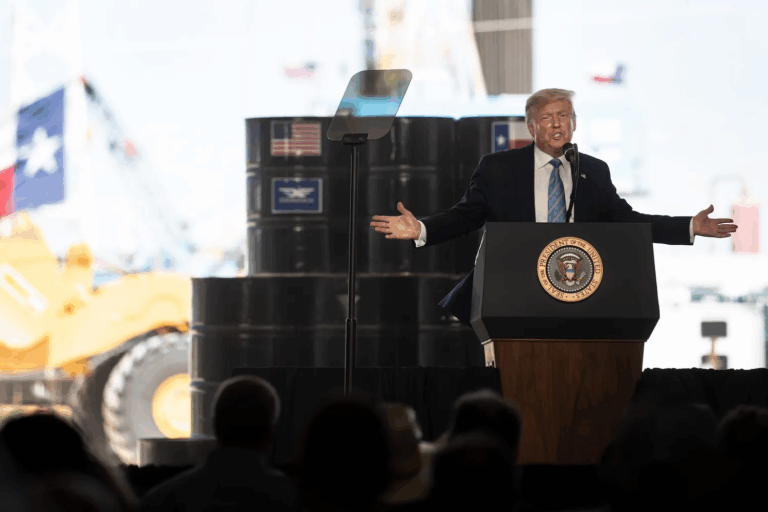Power prices are expected to soar under new tax cut and spending law
In states without policies to drive renewable energy, power prices could surge as federal tax incentives for clean energy disappear, according to Energy Innovation, a think tank.
Current Access Level “I” – ID Only: CUID holders, alumni, and approved guests only
President Trump’s frequent criticism and condemnation of the Joint Comprehensive Plan for Action (JCPOA) has led to speculation that he may not re-certify its national security value in October 2017, beginning a process that could lead to the imposition of new sanctions. The United States has a long history of sanctions against Iran, which have been important in its response to a variety of bad acts by the Iranian government and served an instrumental role in arriving at the nuclear agreement in 2015. The following provides a brief overview of U.S. sanctions since the end of the hostage crisis in 1981.
The United States has had sanctions on Iran for decades, with the first measures imposed against Iran in the early 1980s, responding to Tehran’s support for terrorism and extremism. Starting in 1995, these sanctions were expanded in response to continued Iranian sponsorship of terrorism and pursuit of weapons of mass destruction (WMD) to include a full, comprehensive embargo on bilateral trade (imposed via E.O. 12957 and E.O. 12959 signed by President Clinton) and, in 1996, sanctions that sought to isolate Iran from non-U.S. energy companies as well. This development spawned the creation of a new concept, that of “secondary” sanctions. Distinct from “primary” sanctions (which target U.S. trade with a foreign country), secondary sanctions target non-US people or entities from engaging in trade with another foreign country. Access to the United States and critically, its markets is held as leverage under secondary sanctions.
These sanctions targeted foreign investment in Iranian oil and gas development, and prompted a major confrontation between the United States and its partners, primarily those in Europe. European governments moved to prohibit their companies from complying with the U.S. sanctions if they varied with European Union trade policy, and they also filed a suit with the World Trade Organization. Secretary of State Albright negotiated a compromise, in which the United States waived sanctions on the affected European companies in exchange for a European commitment to work with the United States to address Iranian support for terrorism and development of weapons of mass destruction.
In 2002, this commitment was tested by revelations that Iran was developing nuclear capabilities without providing the declarations and access to international inspectors required under the Nuclear Nonproliferation Treaty. European governments sought to negotiate a solution to this crisis and developed suspensions of nuclear activities with Tehran in 2003 and again in 2004. In 2005, these efforts broke down with Iranian President Ahmadinejad rejected European negotiating offers and restarted some of the suspended nuclear activities.
This led the United States and European governments in 2006 to start working together to develop new sanctions at the United Nations Security Council (UNSC). Four resolutions in total were passed: UNSC resolutions 1737 (2006), 1747 (2007), 1803 (2008), and 1929 (2010). They primarily focused on Iran’s access to nuclear and missile technology, as well as arms. They also permitted – and, to an extent, encouraged – states to impose their own national sanctions against Iran in areas like energy, financial services, and transportation. To obtain support for these resolutions, the United States also offered to negotiate a solution to the nuclear crisis, one that would result in Iran being “treated like any other state party under the Nuclear Nonproliferation Treaty” when fully implemented.
However, UNSC-imposed sanctions proved insufficient to motivate Iranian policy change. In 2010, the United States imposed new, secondary sanctions that increased the pressure on Iran by compelling foreign companies and banks to withdraw from Iran. In 2012, these efforts were matched by pressure on the customer that bought Iranian oil to reduce their purchases by significant amounts every 180 days or face losing access to the United States. The result was a 1.4 million barrel per day decline in Iranian exports relative to pre-sanctions levels. In 2013, the United States and Iran negotiated the Joint Plan of Action, an initial agreement that froze U.S. sanctions against the nuclear program (and therefore against the Iranian economy in general) in exchange for a freeze in Iranian nuclear activities. In 2015, a Joint Comprehensive Plan of Action was negotiated, which suspended most of the rest of U.S. secondary sanctions against Iran, leaving only the provisions that relate to Iranian support for terrorism, development of ballistic missiles and other arms-related transactions, and violations of human rights. Since that time, both the Obama and Trump Administration continued to implement these sanctions, including through new designations of illicit Iranian actors and their foreign counterparts.
Related work by Richard Nephew, senior research scholar at the Center on Global Energy Policy at Columbia University:
Iran Nuclear Deal on Life Support
The report outlines five foundational choices if a stockpiling strategy is adopted, as bipartisan support suggests is possible.

The war with Iran shows why hopes for energy independence are inadequate.

The European Commission published a proposed regulation on June 17 to end Russian gas imports by the end of 2027.
